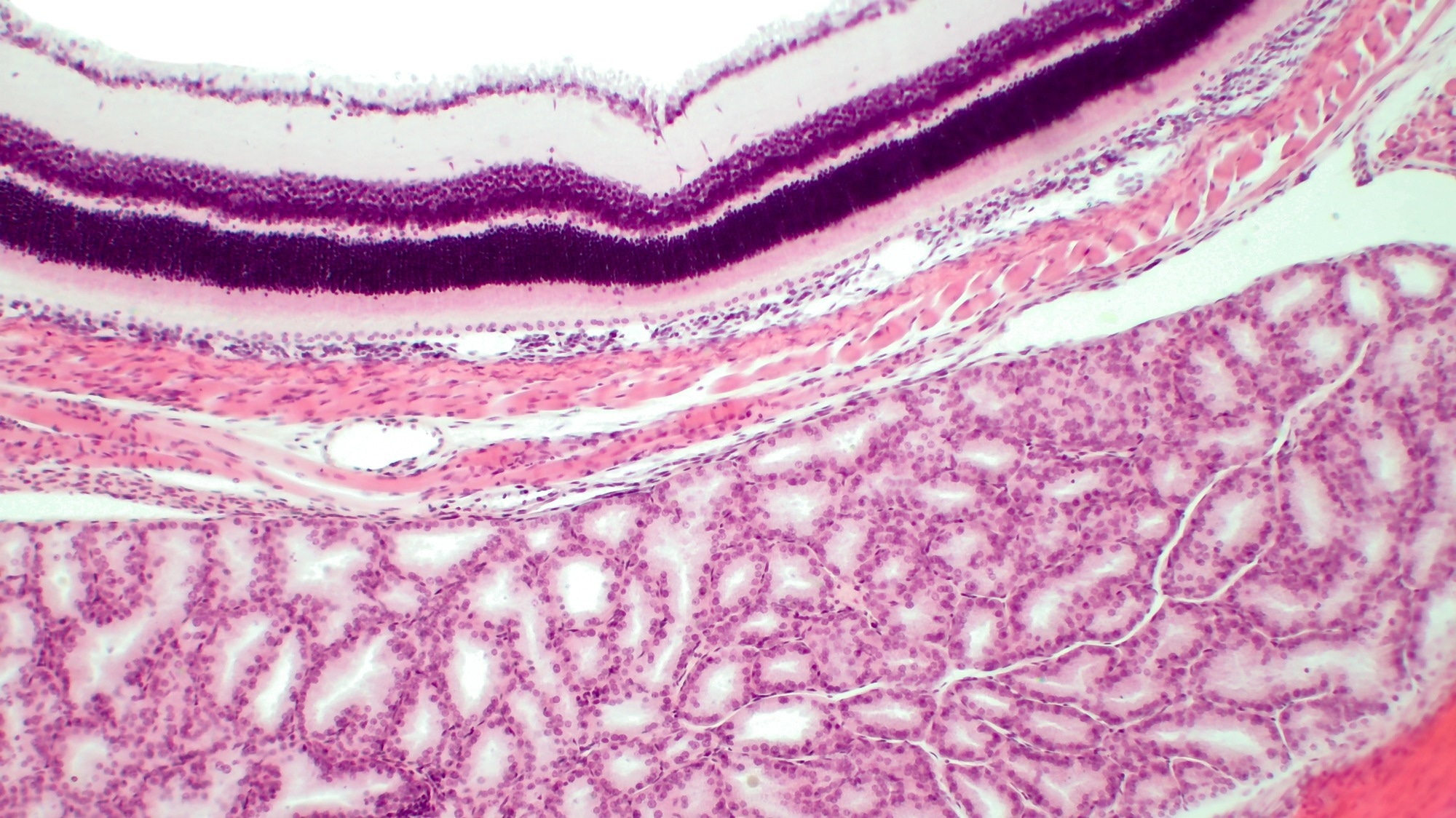A recent study published in the journal Npj Parkinson’s Disease investigated whether increased thinning rate in the parafoveal ganglion cell-inner plexiform layer (pfGCIPL) and peripapillary retinal nerve fiber layer (pRNFL) indicates the progression of the Parkinson’s disease (PD).
Study: Association of retinal neurodegeneration with the progression of cognitive decline in Parkinson’s disease. Image Credit: BioFoto / Shutterstock
Background
Retinal changes are robustly associated with neurodegenerative diseases, such as PD. The changes in retinal layer thickness can be assessed using high-resolution optical coherence tomography (OCT). Among different retinal layers, the ganglion cell-inner plexiform layer (GCIPL) can be used as a biomarker to determine cognitive decline and neurodegeneration.
Several studies have shown that visual disability can be used to predict dementia and cognitive impairment in PD patients. A key advantage of OCT is that it can identify PD patients with or without visual impairment. A reduced thickness of pfGCIPL and pRNFL has been associated with cognitive decline.
Due to the existing disagreement between different OCT technologies and devices, it has been challenging to develop a universal cut-off value for retinal thickness that correlates with PD progression. To overcome this shortcoming, the rate of retinal thinness is used to predict the clinical outcome of PD.
About the Study
The key objective of this study was to validate that a higher rate of thinning of pfGCIPL and pRNFL occurs in PD in comparison to the control group. Furthermore, the association between the aforementioned thinning rates and clinical scores of PD progression was also assessed.
Two longitudinal databases, from Cruces University Hospital and Araba University Hospital, were used in this study. In the test group, participants were enrolled between February 2015 and December 2021. This study excluded participants who tested positive for PD-causing genetic mutations in LRRK2, PARK2, and SNCA. In the control group, participants who had at least one first-degree relative with a PD diagnosis were excluded.
All participants were screened to determine and eliminate subjects with potential confounding factors (e.g., eye diseases and retinal alterations) that could influence retinal OCT measures or clinical outcomes. Since participants with cataract or corneal alterations did not affect OCT scans, they were included in the study cohort. The participants’ demographic details were also obtained.
Study Findings
The mean age of the test or PD group and control group participants was 64.8 years and 61.4 years, respectively. Therefore, the participants in the control group were younger than the PD group. The control group had significantly more female participants than male participants.
 Using linear mixed-effects models adjusted for age at baseline and sex. Color represents the estimated atrophy rate in each foveo-centered area. Absolute rates are represented in the first two columns. The relative increase in PD vs. control is represented on the third column, and the corresponding significant p-values for group effect are represented in gray scale. Abbreviations: GCIPL: ganglion cell-inner plexiform layers; PD, Parkinson’s disease.
Using linear mixed-effects models adjusted for age at baseline and sex. Color represents the estimated atrophy rate in each foveo-centered area. Absolute rates are represented in the first two columns. The relative increase in PD vs. control is represented on the third column, and the corresponding significant p-values for group effect are represented in gray scale. Abbreviations: GCIPL: ganglion cell-inner plexiform layers; PD, Parkinson’s disease.
The study confirmed a higher rate of retinal thinning in PD patients compared to the control group. This thinning rate was significant in pfGCIPL and the temporal sector of the pRNFL. Importantly, a varying rate of retinal neurodegeneration in different individuals with PD was highlighted. PD patients with higher baseline pfGCIPL atrophy are generally associated with slower rates of pfGCIPL thinning over time. The cognitive and motor analyses conducted here indicated that patients with higher baseline pfGCIPL atrophy are more likely to develop severe PD with longer disease duration.
Among the PD patients, those with baseline retinal atrophy and slower pfGCIPL thinning exhibited a significantly faster cognitive decline. A decoupled progression was observed between macular changes and cognitive decline, which entails the possibility of macular neurodegeneration to precede cognitive deterioration. Consistent with the findings documented here, previous studies have also indicated the association between retinal OCT and clinical outcomes in PD. The current study revealed that assessment of inner retinal thickness could indicate motor disability and disease duration in PD.
Conclusions
Some limitations of this study include a relatively short follow-up time, an irregular follow-up schedule across participants, and a limited number of follow-up visits per participant. Another shortcoming was the use of OCT images obtained from clinical settings, which had image quality issues. Some other discrepancies also prevailed in datasets, such as age and sex differences in participants of the two study cohorts. The possible existence of inherent noise within the dataset could cause statistical insignificance between the study groups.
Despite the limitations, this study indicated the presence of enhanced retinal neurodegeneration in PD patients. Another significant finding unveiled the association between early pfGCIPL atrophy and a slower rate of pfGCIPL thinning with rapid cognitive decline in PD patients.
In sum, pfGCIPL atrophy could be the mechanism underlying brain degeneration that leads to cognitive decline. Hence, pfGCIPL can be used as a potent biomarker to assess cognitive decline rates over time in PD patients. In the future, alteration in temporal pRNFL must be further investigated to better understand its potential as a biomarker for cognitive decline.
- Urcola, J. A. et al. (2024) Association of retinal neurodegeneration with the progression of cognitive decline in Parkinson’s disease. Npj Parkinson’s Disease. 10(1), 1-10. DOI: 10.1038/s41531-024-00637-x, https://www.nature.com/articles/s41531-024-00637-x




